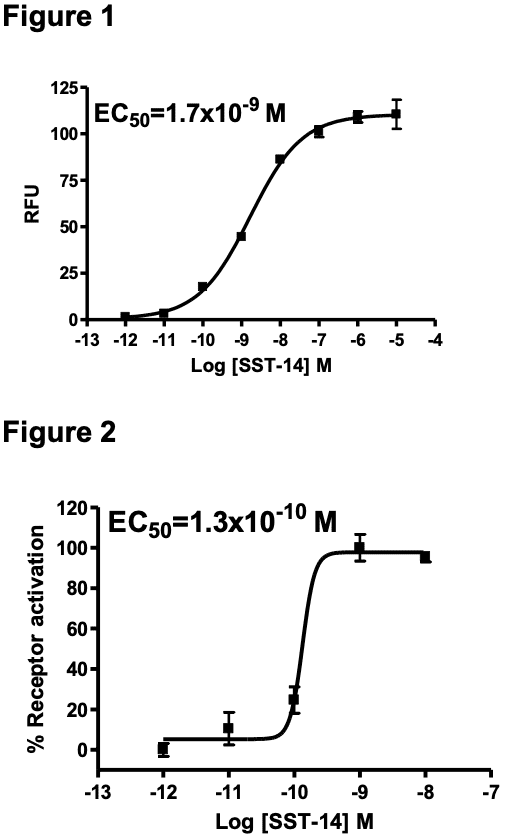Product Information
Catalog Number:
C1346-1
Lot Number:
C1346-1-030609
Quantity:
1 vial (2 x 106) frozen cells
Freeze Medium:
Sigma Freezing Medium (C-6164)
Host cell:
CHO-K1
Transfection:
Expression vector containing full-length human SSTR2 cDNA (GenBank Accession Number AY236542) with FLAG tag sequence at N-terminus
Recommended Storage:
Liquid nitrogen upon receiving
Propagation Medium: DMEM/F12, 10% FBS, 10 μg/ mL puromycin
Stability:
Stable after minimum of two months continuous growth
Data Sheet
Background: Somatostatin receptors are activated by somatostatin secreted from nerve and endocrine cells. The Somatostatin Receptors (SSTRs) are expressed in a tissue-specific manner and involved in the regulation of secretion of insulin, glucagon and growth hormone as well as cell growth induced by neuronal excitation in both the central and peripheral nervous systems. Aberrent expression of somatostatin receptors is known in a large number of human tumours. SSTR2 is expressed in highest levels in the stomach, jejunum, cerebrum, thyroid and kidney. Its gene expression is lost in 90% of human pancreatic adenocarcinomas while SSTR2 expression in neuroblastoma correlates positively to overall and event-free survival. Expression of SSTR-2 and SSTR-5 may be important in the growth inhibitory effect of somatostatin in human pancreatic cancer.
Application: Functional assays

Figure 1. Dose-dependent stimulation of calcium flux upon treatment with ligand, measured with MultiscreenTM Calcium 1.0 No Wash Assay Kit (Multispan MSCA01). Figure 2. Dose-dependent inhibition of forskolin-stimulated intracellular cAMP accumulation upon treatment with ligand, measured with MultiscreenTM TR-FRET cAMP 1.0 No Wash Assay Kit (Multispan MSCM01).
References:
Ardjomand et al. (2003) Expression of somatostatin receptors in uveal melanomas. Invest. Ophthal Vis Sci 44:980-987.
Bertherat et al. (2003) Somatostatin receptors 2 and 5 are the major somatostatin receptors in insulinomas: an in vivo and in vitro study. J Clin Endocr Metab 88:5353- 5360.
